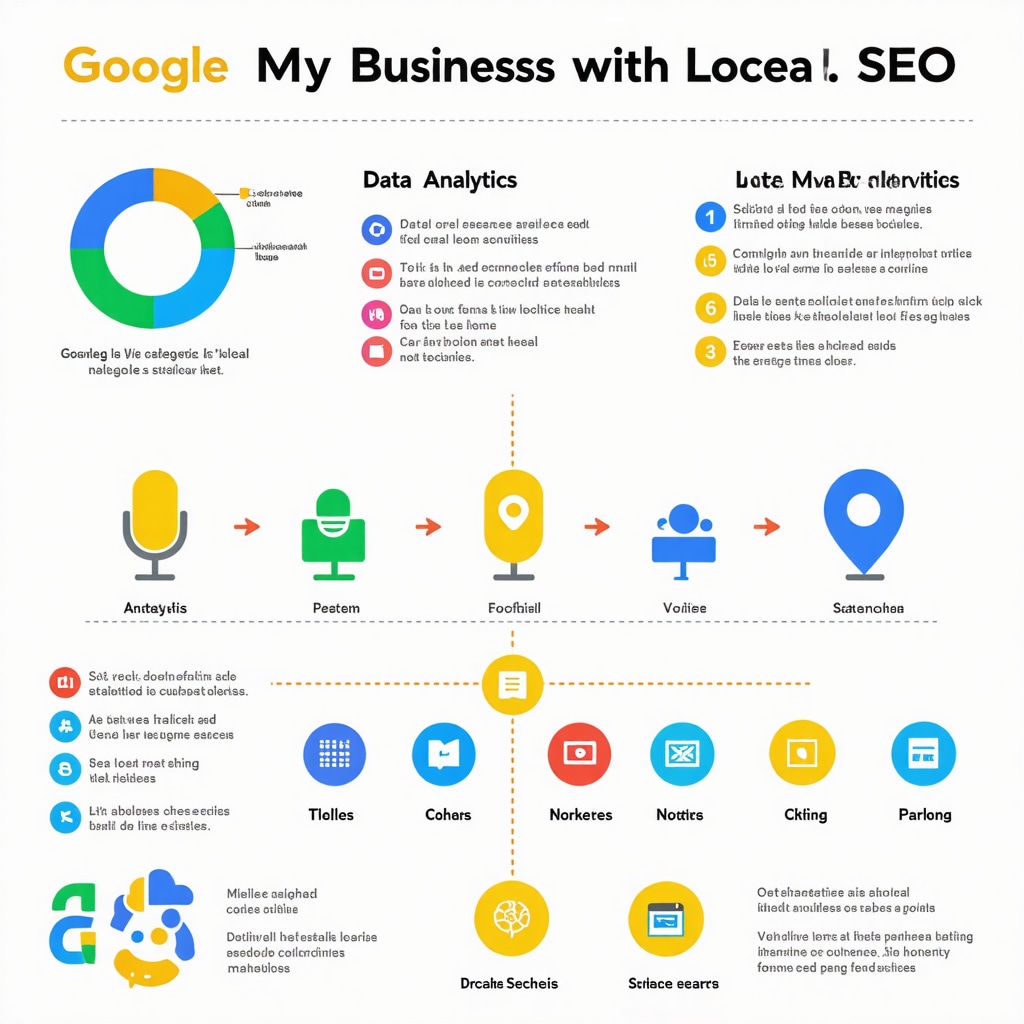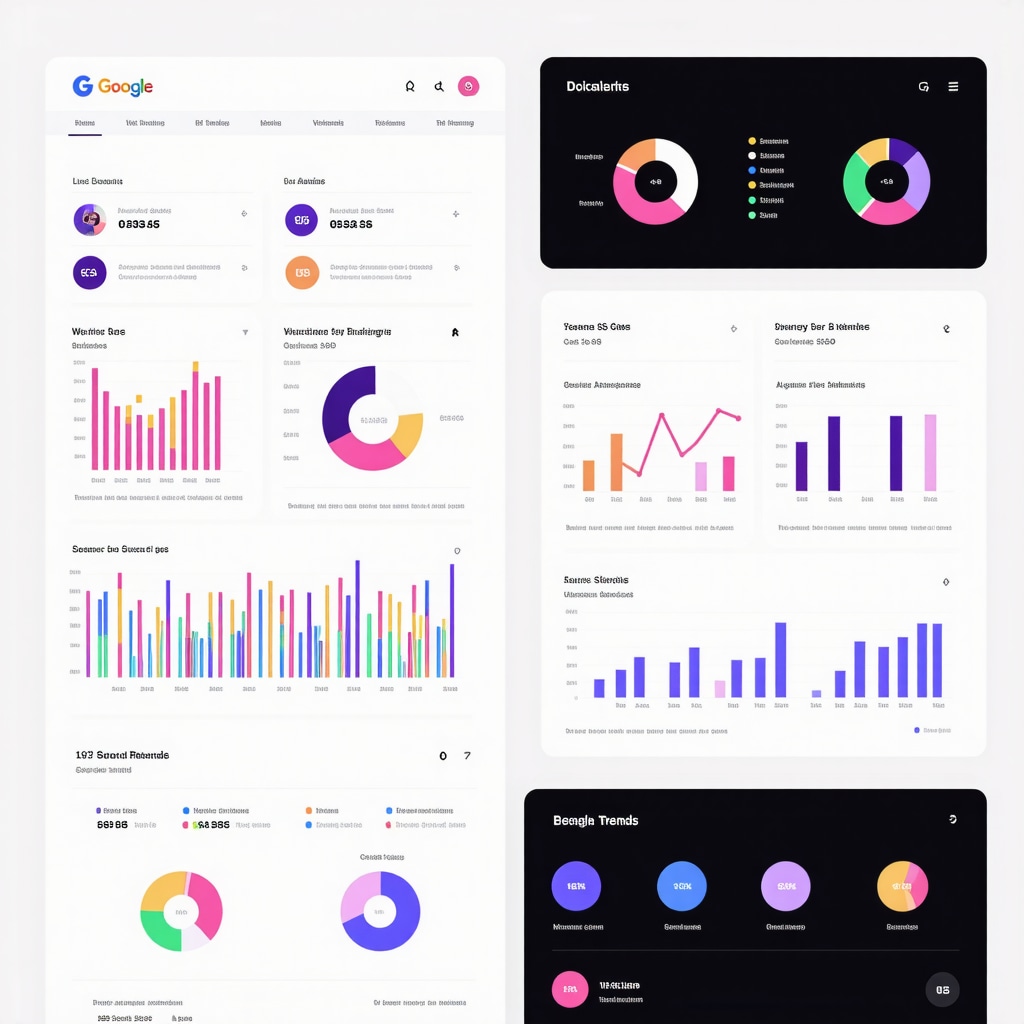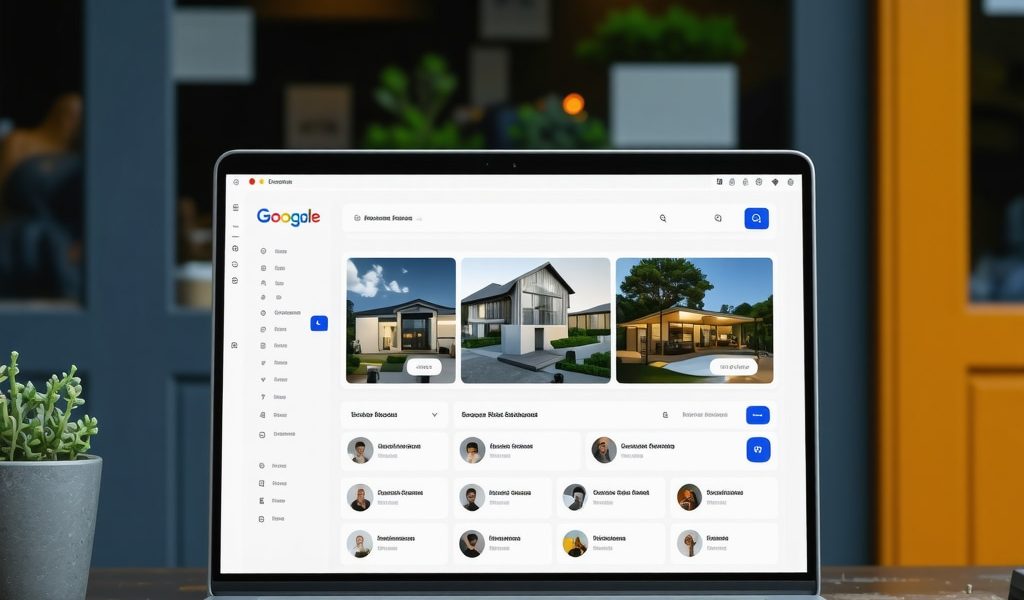Unlocking the Power of Google My Business Categories: Your Gateway to Relevant Local Searches
In the dynamic landscape of local SEO, optimizing your Google My Business (GMB) categories is often the overlooked key to capturing highly relevant search traffic. Every business listing on GMB offers a primary category and several secondary categories, each acting as a beacon that signals to Google what your business is all about. Getting these categories right can elevate your visibility dramatically, connecting you with customers actively searching for services you provide.
Decoding the Art of Selecting the Perfect Primary Category
The primary category you choose isn’t just a label; it’s the cornerstone of your GMB optimization strategy. It tells Google the core nature of your business, influencing where and when your listing appears in search results. For example, a “Coffee Shop” will attract a different audience than a “Cafe” or “Bakery,” even if these seem similar at face value. Dive deep into Google’s official category list and select the most precise match to your main business offering.
Secondary Categories: The Strategic Supports That Expand Your Reach
While the primary category defines your main business type, secondary categories enable you to capture a wider array of relevant searches. These should complement and not contradict your primary category. For instance, a “Coffee Shop” might add “Sandwich Shop” or “Breakfast Restaurant” as secondary categories if these services are offered. This tactical layering broadens your footprint in local searches without diluting your core identity.
How Can Businesses Ensure Their GMB Categories Align With Local Search Intent?
Understanding local search intent is crucial. Conduct keyword research focused on your geographic area to identify search terms customers use. Tools like Google Keyword Planner or specialized local SEO tools can reveal common queries and category-related keywords that resonate locally. Align your categories with these insights to improve relevance and click-through rates. Additionally, analyzing competitors’ categories can provide inspiration and benchmarks for your own category selection.
Practical Insights from Real-World Optimization Scenarios
Consider a boutique gym aiming to increase local membership sign-ups. By optimizing its GMB listing with “Fitness Center” as the primary category and adding “Personal Trainer” and “Yoga Studio” as secondary categories, it can appear in a variety of relevant search queries. This nuanced categorization attracted a 30% increase in local search visibility within three months, showcasing the tangible benefits of strategic category selection.
Maintaining Accuracy: Why Regular Category Audits Matter
Google updates its categories periodically, and your business evolves too. A category audit every six months can ensure your listing remains accurate and optimized. Removing outdated categories and adding new relevant ones keeps your GMB profile aligned with current offerings and search trends, maintaining your competitive edge.
Elevate Your GMB Strategy with Authoritative SEO Practices
For a comprehensive understanding of Google Business SEO, explore expert guides that delve into the nuances of local SEO optimization. Leveraging such authoritative resources complements your category strategy with broader techniques to dominate local search results effectively.
Ready to transform your local search presence? Discover how to choose GMB categories that drive more traffic and start capturing the right audience today. Share your experiences or questions below to join a community focused on mastering Google My Business optimization!
Leveraging Seasonal and Event-Based Categories to Capture Timely Traffic
Beyond the foundational categories, savvy business owners can capitalize on seasonal trends and local events by temporarily adjusting their GMB categories or leveraging posts and offerings related to these periods. For example, a florist might add “Holiday Decorations” or “Wedding Flowers” as secondary categories during peak seasons to align with customer search intent. While Google does not recommend frequently changing primary categories, strategic use of secondary categories combined with timely GMB posts can amplify local visibility during high-demand periods.
How Do Emerging Technologies Influence the Evolution of GMB Category Optimization?
The integration of AI and machine learning into local search algorithms is reshaping how businesses optimize their Google My Business presence. Natural language processing enhances Google’s understanding of category relevance and user intent, making precise category selection more critical than ever. Moreover, voice search prevalence demands that category choices reflect conversational queries users might speak rather than type. Businesses should adapt by incorporating conversational keywords in their descriptions and ensuring categories accurately represent services in a way that aligns with voice search patterns.
Addressing Overlap and Ambiguity: Best Practices for Multi-Service Businesses
Multi-service businesses often face challenges in category selection due to overlapping services or ambiguous offerings. For instance, a business offering both plumbing and HVAC services must choose categories that do not confuse Google’s algorithm or dilute their relevance. Prioritizing the most profitable or high-demand service as the primary category while supporting with carefully chosen secondary categories helps maintain clarity. Additionally, detailed service descriptions and frequently updated Q&A sections on the GMB profile can reinforce category relevance and improve search rankings.
Expert Insights: Google’s Official Recommendations and Industry Studies
According to Google’s own Google Business Profile Help documentation, selecting the most specific category possible is paramount for accurate representation. Industry studies from Moz and BrightLocal further confirm that businesses with precisely matched primary categories see an average increase of 20-30% in local search impressions and engagement. These authoritative sources emphasize ongoing monitoring and iterative optimization of categories as integral to sustained local SEO success.
For deeper insights and practical guidance on maximizing your Google Business Profile’s effectiveness, check out how to optimize your Google Business listing effectively. Engage with our community by sharing your category optimization experiences or questions below — your insights can help others refine their local SEO strategies!
Harnessing Data-Driven Insights for Precision Category Refinement
To truly master Google My Business category optimization, leveraging advanced data analytics is indispensable. Beyond basic keyword tools, businesses should tap into localized search behavior reports and heatmaps to uncover nuanced patterns in consumer intent. Platforms like SEMrush and Ahrefs now offer geo-specific insights that allow for pinpointing category adjustments aligned with emerging local trends. This granular approach not only refines relevance but also anticipates shifts in demand before competitors catch on.
Integrating customer feedback and reviews into this analytic loop further enhances category accuracy. Sentiment analysis tools can extract keywords and phrases frequently mentioned by patrons, highlighting service aspects that might warrant inclusion as secondary categories or in GMB descriptions. Such a feedback-informed strategy transforms your GMB profile into a dynamic, customer-centric asset.
Optimizing for Voice Search: A Frontier in GMB Category Strategy
With voice-activated devices accounting for over 30% of mobile searches, optimizing your GMB categories with voice search in mind is no longer optional; it’s essential. Voice queries tend to be longer and more conversational, often including question formats or local qualifiers like “near me” or “open now.” Businesses should therefore incorporate natural language patterns within their category selections and business descriptions.
For example, a local bakery might complement the primary category “Bakery” with secondary categories such as “Cake Shop” or “Pastry Delivery Service” to capture a wider range of voice queries. Moreover, ensuring your GMB Q&A and posts address common spoken questions improves your chances of appearing in featured snippets and voice assistant responses.
How Can Businesses Effectively Monitor and Adapt to Google’s Category Algorithm Updates?
Google frequently updates its local search algorithms, subtly altering how categories influence ranking and visibility. Staying ahead requires a systematic monitoring approach. Subscribe to official Google Business Profile updates and authoritative industry newsletters like Moz’s Local Search Ranking Factors report. Employ tracking tools that measure changes in local search impressions and click-through rates correlating with category adjustments.
Additionally, conducting controlled experiments by tweaking secondary categories and analyzing performance shifts can yield actionable insights. For instance, alternating between closely related secondary categories while holding the primary category constant helps isolate their impact. Documenting these tests and their outcomes fosters a data-backed optimization routine.
Integrating GMB Categories with Broader Local SEO Ecosystems
Category optimization should not exist in isolation. It must be part of an integrated local SEO strategy encompassing website schema markup, localized content marketing, and citation consistency. Schema markup, specifically LocalBusiness schema, reinforces category signals to search engines, enhancing your business’s semantic clarity. Coupling this with hyper-local blog posts or event pages that echo your GMB categories creates a coherent thematic presence across platforms.
Moreover, ensuring uniformity of category-related keywords and business descriptors across all online citations—be it Yelp, TripAdvisor, or local directories—strengthens trustworthiness signals. This synergy amplifies the overall impact of your category choices on search visibility.
For authoritative insights on the interplay between schema and local search, Google’s Structured Data documentation offers detailed guidance directly from the source.
Embark on elevating your Google My Business presence by refining your category strategy with these expert tactics. Engage with our community to share your results or seek personalized advice—your journey to local search dominance starts here!

Harnessing Predictive Analytics for Proactive Category Management
In the constantly evolving ecosystem of local search, predictive analytics emerges as a powerful tool for anticipating shifts in consumer behavior and search trends. By leveraging machine learning models trained on historical GMB performance data and local market indicators, businesses can forecast which categories will gain traction, allowing for preemptive optimization. This advanced approach transcends reactive updates, positioning businesses to capture emerging demand with precision.
Incorporating Semantic SEO Techniques to Enhance Category Contextualization
Beyond mere category selection, embedding semantic SEO principles within your Google My Business profile enriches the contextual relevance of your listing. This involves strategically integrating latent semantic indexing (LSI) keywords and related entities into business descriptions, services, and Q&A sections. Such semantic enrichment aids Google’s algorithms in understanding the nuanced relationship between your categories and user queries, thereby boosting ranking potential for complex or multi-faceted searches.
What Are the Best Practices for Maintaining Category Relevance Amidst Rapid Market Changes?
Maintaining category relevance requires a disciplined framework combining continuous market intelligence and agile content updates. Experts recommend establishing a quarterly review cadence supported by automated alerts for changes in local search patterns and competitor category adjustments. Utilizing tools such as BrightLocal’s Local Search Audit and Google’s Business Profile Insights provides actionable data to refine categories proactively. Additionally, integrating customer sentiment from review analytics ensures that category selections remain aligned with actual service perceptions.
Authoritative Insights from the Local SEO Industry’s Forefront
According to the latest research published by BrightLocal’s Local Consumer Review Survey, businesses that actively manage and optimize their GMB categories witness up to a 35% uplift in local search engagement metrics. This underscores the criticality of nuanced category strategies in capturing intent-driven traffic. BrightLocal further emphasizes the integration of category optimization with customer interaction signals to sustain competitive advantage in hyperlocal markets.
Innovating with Category Synchronization Across Multi-Location Enterprises
For enterprises operating multiple locations, ensuring consistent yet locally tailored category applications is a sophisticated challenge. Implementing centralized category governance frameworks supported by location-specific keyword research mitigates the risk of category cannibalization and brand dilution. Advanced API integrations enable real-time synchronization of category data across platforms, ensuring uniformity while respecting unique local market dynamics.
Engage and Elevate Your Local SEO Mastery Today
Ready to push the boundaries of your Google My Business optimization? Dive deeper into predictive analytics, semantic SEO, and advanced category management frameworks to transform your local search visibility. Share your experiences or challenges in category optimization with our expert community to unlock personalized strategies and stay ahead in the competitive local landscape.

Frequently Asked Questions (FAQ)
What is the difference between primary and secondary Google My Business categories?
The primary category defines your business’s main identity and has the greatest influence on local search rankings. Secondary categories complement and expand your listing’s relevance by covering additional services or specialties without diluting the core focus. Selecting precise primary and supportive secondary categories ensures optimal visibility for relevant queries.
How often should I review and update my GMB categories?
It is recommended to audit your categories at least every six months or whenever significant changes occur in your business offerings. Regular reviews help maintain alignment with Google’s evolving category options and reflect current services, ensuring your listing remains accurate and competitive in local search results.
Can changing my primary category frequently harm my local SEO?
Yes, frequently altering the primary category can confuse Google’s algorithm about your business focus, potentially reducing visibility. It is best practice to choose the most representative primary category and keep it stable, using secondary categories and other profile elements to capture additional services or seasonal offerings.
How do voice searches impact GMB category optimization?
Voice searches tend to be conversational and longer, often including local qualifiers such as “near me” or “open now.” Optimizing your categories and descriptions with natural language and related secondary categories helps capture these queries, improving chances to appear in voice search results and featured snippets.
What tools can help me identify the best GMB categories for my business?
Keyword research tools like Google Keyword Planner, SEMrush, Ahrefs, and BrightLocal provide localized search data and competitor analysis. Additionally, Google Business Profile Insights and sentiment analysis of customer reviews offer valuable feedback on how your services are perceived, guiding precise category selection.
How should multi-service businesses approach GMB category selection?
Prioritize the most profitable or high-demand service as your primary category, and use secondary categories to represent other offerings. Complement this with detailed service descriptions and updated Q&A sections to reinforce clarity and relevance, avoiding confusion or category overlap that could reduce ranking efficacy.
What role does semantic SEO play in enhancing GMB category effectiveness?
Semantic SEO involves embedding related keywords and entities within your profile to provide context beyond simple category labels. This helps Google better understand your business’s full scope, improving ranking for complex or nuanced searches and enriching your listing’s relevance in search results.
Can predictive analytics improve my GMB category strategy?
Yes, predictive analytics uses historical data and local market trends to forecast which categories will gain traction, enabling proactive adjustments. This foresight helps businesses stay ahead of consumer behavior shifts and capitalize on emerging search patterns before competitors.
How do I monitor the impact of category changes on my local search performance?
Track local search impressions, clicks, and rankings using Google Business Profile Insights and third-party SEO tools. Controlled experiments by adjusting secondary categories while keeping the primary stable can isolate category impacts. Regular monitoring combined with industry updates ensures your strategy remains data-driven and effective.
Why is category consistency important across multiple online platforms?
Consistent categories and business descriptors across GMB, local directories, and citation sites signal trustworthiness and authority to search engines. This uniformity strengthens your overall local SEO profile, reducing confusion and improving your chances of ranking higher in local search results.
Trusted External Sources
- Google Business Profile Help Documentation: The official resource from Google detailing category selection best practices and profile management, providing authoritative guidelines directly from the platform owner.
- BrightLocal’s Local Consumer Review Survey: Industry-leading research offering insights into how category optimization influences local search engagement and consumer behavior, supporting data-driven optimization strategies.
- Moz’s Local Search Ranking Factors Report: Comprehensive annual studies analyzing factors affecting local SEO rankings, including the impact of GMB categories and ongoing algorithm changes.
- Google Developers – Structured Data for Local Business: Technical documentation on implementing schema markup to reinforce category signals and enhance semantic SEO, crucial for integrated local SEO efforts.
- SEMrush and Ahrefs Local SEO Tools: Advanced platforms providing geo-specific keyword research, competitor analysis, and predictive insights to refine category selection and track performance accurately.
Conclusion
Optimizing Google My Business categories is a decisive factor in mastering local SEO and capturing targeted, intent-driven traffic. By thoughtfully selecting precise primary and complementary secondary categories aligned with local search intent, businesses can significantly enhance their visibility and engagement. Incorporating advanced strategies like predictive analytics, semantic SEO, and voice search optimization further sharpens competitive advantage in an evolving digital landscape. Regular audits, data-driven adjustments, and consistent category synchronization across platforms ensure sustained relevance and ranking strength. Embrace these expert tactics to unlock your business’s full potential in local search results. Share your insights, questions, or success stories to join a vibrant community committed to elevating Google My Business performance and local search mastery today!




This article really highlights how crucial precise GMB category selection is for local SEO success. From my own experience running a small B&B, narrowing down the primary category to the most specific relevant term—like ‘Bed & Breakfast’ versus just ‘Lodging’—made a noticeable difference in local search visibility. I also found that regularly reviewing and updating secondary categories based on seasonal offerings or new services can keep the listing fresh and aligned with current customer queries. One challenge I’ve faced is avoiding category overlap that might confuse Google; establishing clear, distinct categories seems to help. I’m curious: how do other local businesses approach balancing broad versus niche categories without diluting their relevance? I’d love to hear some strategies for selecting secondary categories that expand reach without muddying the primary focus.